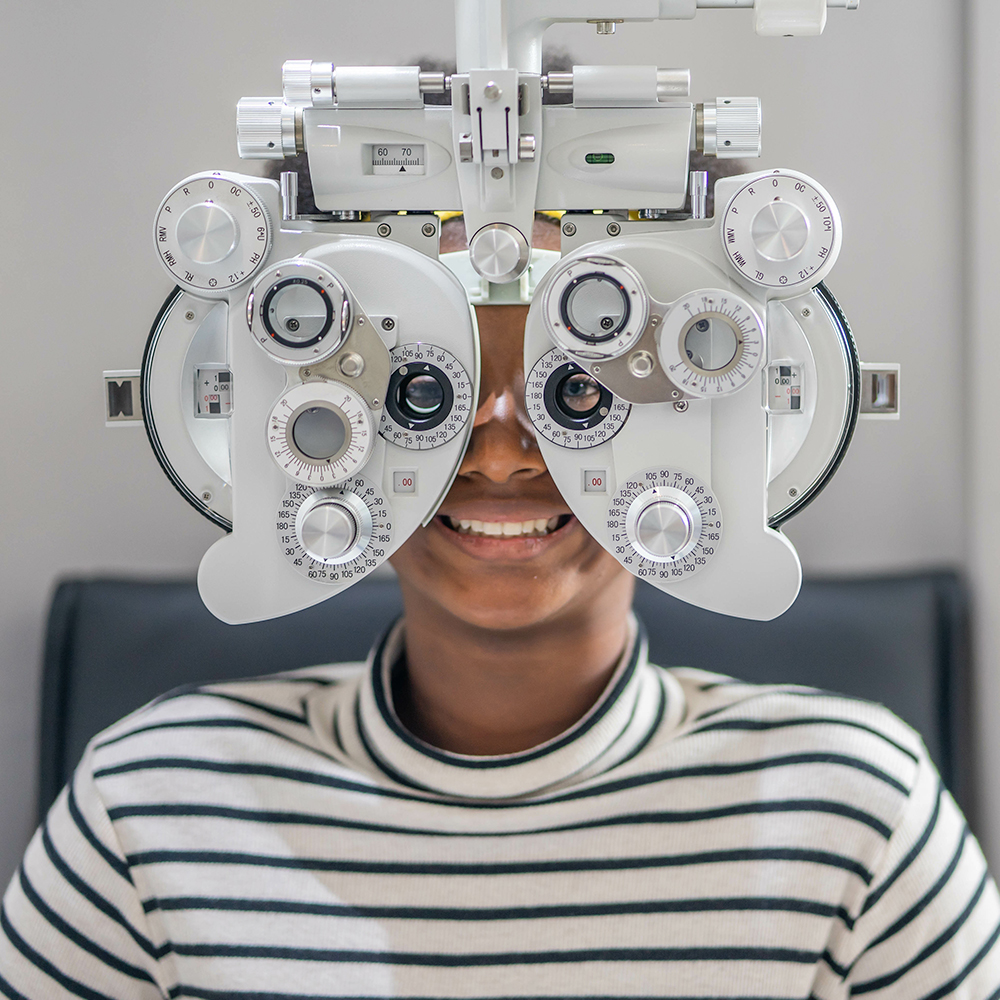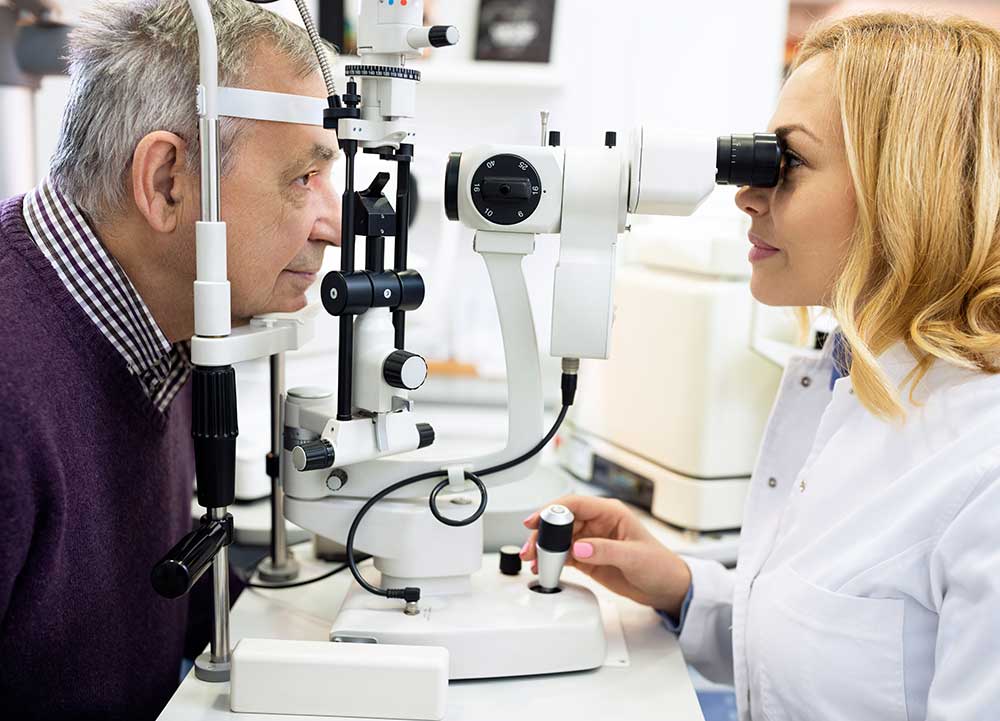Checking Out the current Technical Developments in Optometry and What They Mean for Eye Doctors
In the ever-evolving area of optometry, recent technical advancements are reshaping exactly how specialists come close to eye treatment. From the precision of Optical Comprehensibility Tomography to the nuanced understandings offered by AI-driven analysis devices, these developments are establishing brand-new criteria in client analysis and therapy. Teleoptometry is poised to redefine ease of access, guaranteeing that know-how goes beyond geographical limitations. As these innovations permeate the practice, optometrists are encountered with the challenge of accepting these tools to improve individual outcomes. The question continues to be: exactly how will these technical changes redefine the duties and duties within the profession?
Innovations in Diagnostic Tools
Progressing the area of optometry, technologies in analysis devices have actually revolutionized the means eye treatment specialists assess and detect aesthetic impairments and eye problems. The previous years has seen considerable technological innovations, enabling even more precise and detailed evaluations. Optical Coherence Tomography (OCT), for instance, offers high-resolution cross-sectional pictures of the retina, permitting the very early detection of illness such as glaucoma and age-related macular deterioration. This non-invasive imaging technique has actually become crucial in modern optometric practice.
One more key development is the introduction of innovative corneal topography systems, which map the surface area curvature of the cornea with accuracy. These tools are particularly useful for fitting call lenses and detecting corneal conditions. Moreover, electronic retinal imaging has changed conventional ophthalmoscopy, providing comprehensive, breathtaking sights of the retina that promote extensive aesthetic exams.
The growth of wavefront aberrometry has also been important, enabling the analysis of refractive errors with unparalleled accuracy (Opticore Optometry). This technology helps in personalizing corrective lenses and enhancing medical end results for refractive surgical procedures. Collectively, these diagnostic innovations equip optometrists to provide remarkable patient care, making certain early treatment and tailored therapy methods, eventually boosting visual wellness results
AI in Patient Administration
Building on the foundation of innovative diagnostic tools, the consolidation of expert system (AI) in patient management represents a transformative jump for optometry. AI systems are significantly used to improve effectiveness, precision, and customization in patient treatment. By analyzing large quantities of information, AI can identify patterns and predict possible ocular conditions, making it possible for eye doctors to tailor treatments better. This capacity is essential in managing persistent eye diseases such as glaucoma and diabetic retinopathy, where very early discovery and constant surveillance are vital.
Furthermore, AI-driven platforms help with streamlined patient interactions and administrative procedures. Automated organizing, virtual examinations, and customized follow-up strategies not just boost client complete satisfaction yet additionally maximize time administration for professionals. These systems can triage individuals based upon the necessity of their problems, guaranteeing that those in essential need get punctual interest.
In addition, AI boosts decision-making by supplying eye doctors with evidence-based suggestions and treatment paths. By integrating information from electronic wellness documents, AI tools use understandings that notify clinical choices, lowering the threat of mistakes and boosting patient outcomes. As AI remains to advance, its duty in client monitoring will likely expand, reshaping the landscape of optometric care.
Advances in Retinal Imaging
In the realm of optometry, retinal imaging has actually witnessed impressive technical innovations that are enhancing analysis capabilities and individual treatment. Developments such as Optical Comprehensibility Tomography (OCT) and fundus photography have actually reinvented exactly how eye doctors analyze the retina and picture.
Boosted imaging techniques like OCT angiography are further refining diagnostic accuracy. This non-invasive strategy maps blood flow in the retina, supplying important insights right into vascular wellness without the requirement for dye shots. In addition, flexible optics innovation is being incorporated into retinal imaging systems to fix ocular aberrations, supplying unmatched photo quality. Such advancements assist in the identification of min retinal adjustments that might represent condition development.
In addition, advancements in fabricated knowledge are boosting retinal imaging by allowing computerized evaluation of large datasets. These systems assist optometrists in identifying patterns indicative of pathology, consequently boosting analysis precision and performance. Jointly, these technologies are transforming retinal imaging right into a cornerstone of contemporary eye treatment, improving end results and expanding therapeutic possibilities.
Teleoptometry's Expanding Role
Teleoptometry is significantly becoming a vital element of eye care, driven by developments in digital interaction and diagnostic tools. As optometry welcomes digital transformation, teleoptometry helps with remote consultations, permitting eye doctors to prolong their solutions beyond typical boundaries. This is specifically advantageous in rural and underserved locations where accessibility to specialized eye treatment is typically limited. By leveraging high-resolution video clip conferencing and advanced retinal imaging, eye doctors can conduct comprehensive eye tests from afar, guaranteeing timely diagnosis and therapy.
The combination of expert system (AI) further boosts teleoptometry, making it possible for the evaluation of visual data and aiding in the detection of eye conditions such as glaucoma and diabetic retinopathy. AI-powered algorithms can swiftly interpret intricate imaging information, supplying optometrists with important understandings that boost scientific decision-making.
Moreover, teleoptometry sustains continuity of treatment through seamless integration with digital health and wellness records (EHRs), allowing eye doctors to maintain detailed patient histories. This makes certain that patients get consistent pop over here and personalized treatment also when consulting with different professionals.
Despite these advantages, obstacles continue to be, including making sure information security and managing client expectations. Teleoptometry represents a significant stride towards more obtainable, effective, and patient-centered eye treatment. As modern technology develops, its duty is positioned to expand additionally.

Future Fads in Eye Treatment
A myriad of innovative fads is set to reshape the future of eye treatment, driven by technological advancements and the evolving requirements of individuals. One substantial fad is the combination of expert system (AI) in diagnostics, which assures to enhance the precision and effectiveness of eye assessments. AI algorithms can evaluate vast amounts of information from retinal photos, possibly identifying problems like Go Here diabetic retinopathy and glaucoma earlier than typical methods.
Furthermore, individualized medication is acquiring traction in optometry, with hereditary testing informing customized therapy strategies. This method intends to optimize person end results by tailoring treatments to individual genetic profiles. Wearable modern technology, such as smart call lenses, is also on the perspective, providing real-time tracking of intraocular stress or sugar degrees, therefore giving constant understandings right into eye and systemic health.
The adoption of enhanced truth (AR) and online reality (VIRTUAL REALITY) in training and person education and learning is another emerging pattern. These technologies offer immersive experiences that can boost understanding and abilities both for eye doctors and patients. As these patterns progress, optometrists should stay abreast of technological improvements to offer advanced treatment, guaranteeing better client results and complete satisfaction in the dynamic landscape of eye care.
Conclusion

Jointly, these analysis advancements equip eye doctors to deliver exceptional person care, guaranteeing early intervention and tailored treatment approaches, inevitably improving aesthetic health and wellness results.

As these technologies proceed to progress, eye doctors must adapt and integrate them into practice, ultimately optimizing workflow performance and boosting the standard of eye treatment delivered to patients.
Comments on “Exactly How an Eye Doctor Can Help Prevent Vision Problems in Chino”